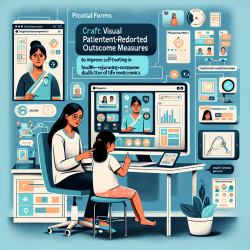Introduction
In the realm of educational interventions, Participatory Action Research (PAR) stands out as a transformative approach that empowers students to take an active role in their learning environment. The study "Participatory Action Research (PAR) in Middle School: Opportunities, Constraints, and Key Processes" by Ozer, Ritterman, and Wanis provides valuable insights into how PAR can be effectively implemented in middle schools to enhance student engagement and outcomes.
The Essence of PAR
PAR is a collaborative methodology that involves students in the research process, allowing them to identify issues, conduct research, and implement solutions within their schools. This approach not only enhances students' sense of ownership and control over their learning environment but also fosters skills in research, communication, and advocacy.
Key Findings from the Study
The study conducted by Ozer and colleagues highlights several key processes and outcomes of implementing PAR in middle schools:
- Student Engagement: PAR projects significantly increase students' engagement by involving them in meaningful research and action.
- Skill Development: Students develop critical skills in research, strategic thinking, and advocacy, which are essential for their academic and personal growth.
- Empowerment and Identity: PAR enhances students' sense of efficacy and mattering, contributing to positive identity development, especially among marginalized youth.
Challenges and Opportunities
While the benefits of PAR are evident, the study also identifies challenges in its implementation, such as constraints in school culture and resources. However, these challenges present opportunities for educators to innovate and adapt PAR to fit their unique school environments.
Implementing PAR in Your School
For practitioners looking to implement PAR, the study suggests several strategies:
- Build Alliances: Form partnerships with teachers, administrators, and community organizations to support the PAR process.
- Adapt Curriculum: Integrate PAR into existing curricula to enhance learning without overwhelming instructional time.
- Focus on Sustainability: Plan for long-term implementation by securing resources and support from school leadership.
Conclusion
Participatory Action Research offers a promising avenue for enhancing student engagement and outcomes in middle schools. By empowering students to take an active role in their education, PAR not only improves academic performance but also fosters a sense of purpose and identity among students. As practitioners, embracing PAR can lead to transformative changes in school culture and student development.
To read the original research paper, please follow this link: Participatory Action Research (PAR) in Middle School: Opportunities, Constraints, and Key Processes.










